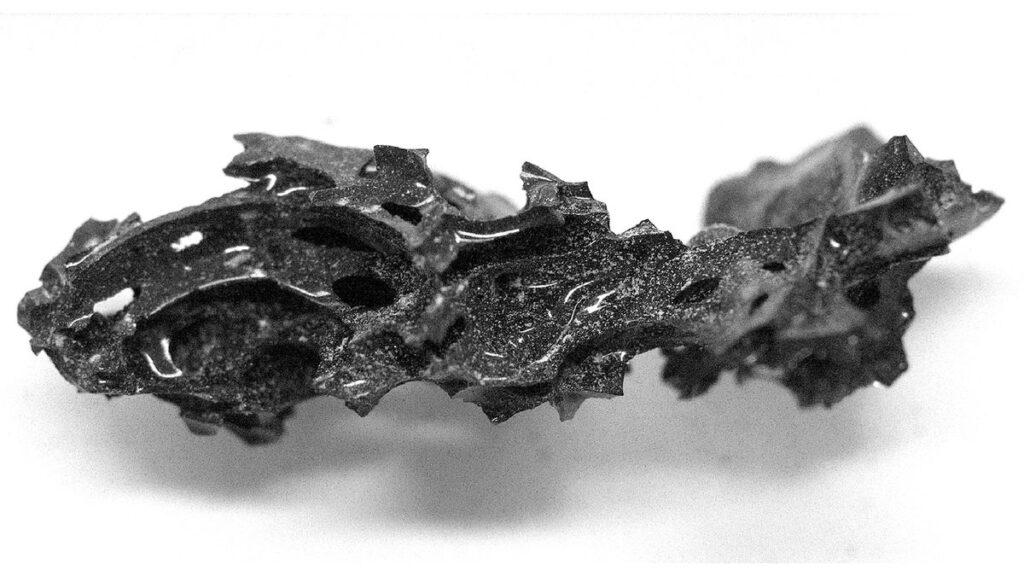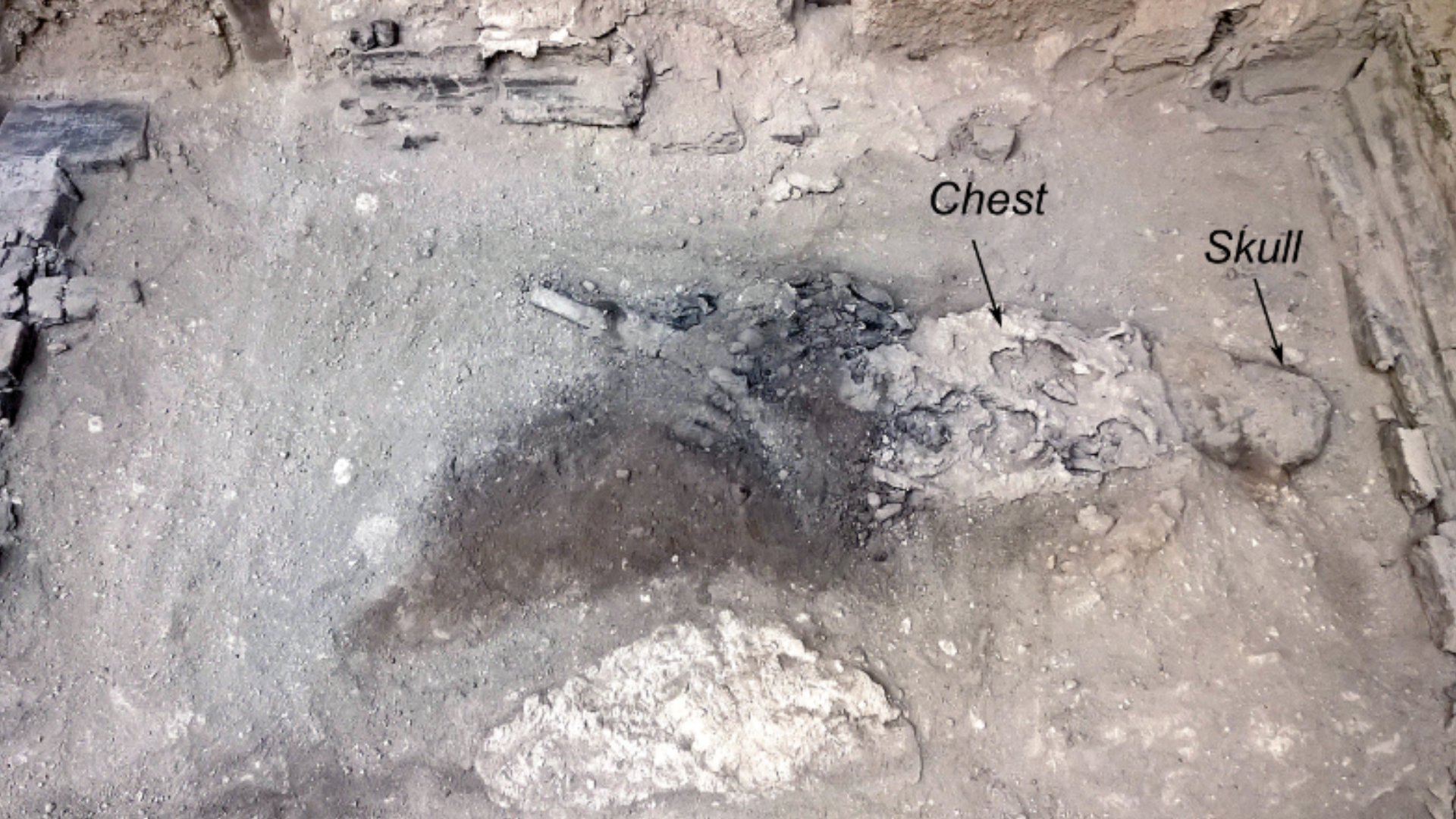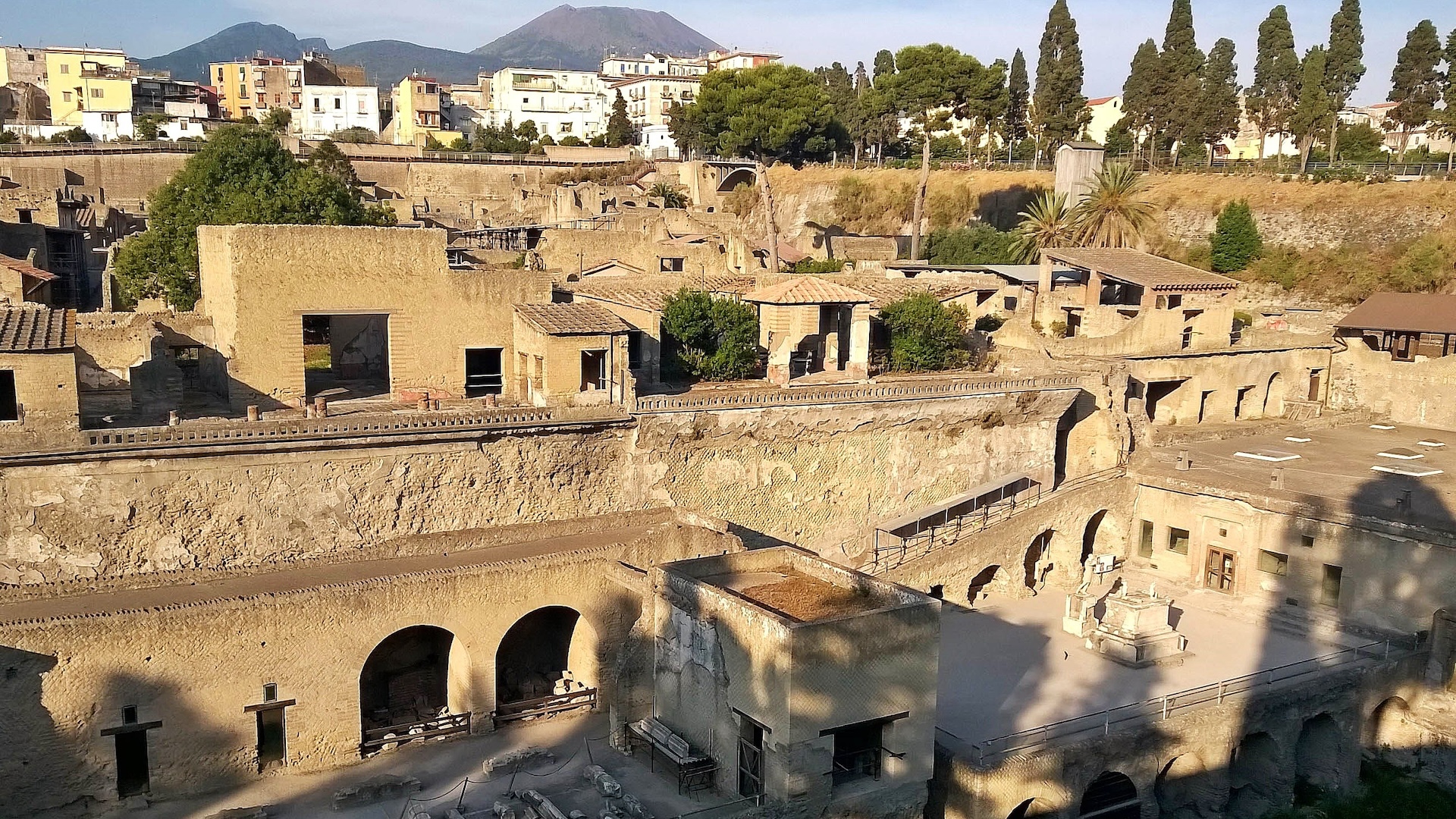In A.D. 79, a man who died in Mount Vesuvius’ eruption near Pompeii had a rare transformation: His brain seemingly turned into glass. But scientists have long debated how it happened, because the pyroclastic flows of rock fragments, ash and gas that buried him would not have been hot enough, nor cooled quickly enough, to “glassify” or vitrify the man’s brain.
Now, researchers have proposed a new explanation: the pyroclastic flows must have been immediately preceded by a superheated cloud of ash that first rapidly heated and then rapidly cooled the man’s brain as it dissipated, turning it to glass.
The new research, published Thursday (Feb. 27) in the journal Scientific Reports, is the latest volley in a dispute over the material found in remains of the man’s skull. The first study claiming this was published in 2020. But critics alleged the same year that the “glass brain” may not have been brain tissue at all. The new study provides additional evidence, however, including remnants of brain cells, that the authors suggest show the material is glassified brain tissue.
Ash clouds
The new theory is supported by studies of charcoal fragments found near the man’s remains at Herculaneum, a seaside town a few miles from Pompeii that was destroyed in the same eruption, study lead author Guido Giordano, a geologist and volcanologist at Italy’s Roma Tre University, told Live Science.
“At Herculaneum, we found charcoal fragments that experienced multiple [heating] events and the highest temperatures were associated with the early super-hot ash cloud,” he said in an email.
Related: Remains of man who was ‘vaporized’ by Mount Vesuvius 2,000 years ago discovered
Such ash clouds are known to have formed during several recent volcanic eruptions that featured pyroclastic flows, including the 1991 eruption of Japan’s Mount Unzen and the 2018 eruption of Guatemala’s Fuego volcano, he said.
The initial ash clouds contained little volcanic material and so might seem to have little physical impact, he said. But they could still be fatal because of their super-hot temperatures — and the researchers estimate the initial ash cloud that covered Herculaneum was more than 950 degrees Fahrenheit (510 degrees Celsius), which was at first hot enough — and then rapidly cool enough — to vitrify the man’s brain.
Glass brain
However, some scientists have disputed whether the glassy material found in the man’s remains at Herculaneum was ever brain tissue. A study published in 2020 in the journal Science & Technology of Archaeological Research led by molecular archaeologist Alexandra Morton-Hayward — now at the University of Oxford — claimed that samples of the glassy material had not been made available to outside researchers. She and her colleagues also argued that the pyroclastic flows at Herculaneum were not hot enough, nor had they cooled fast enough, to turn a brain into glass.
The man’s remains were found in the mid-1960s, showing he had died while lying on a bed in a building of the Collegium Augustalium, a civic institution that promoted the worship of the Roman emperor.
The new study by Giodano and his colleagues reinforces their claim that the glassy material had been part of the man’s brain and presents microscopic analysis showing the remains of brain cells and other brain structures within the glassy material.
Archaeologist Pedar Foss of DePauw University in Indiana and the author of “Pliny and the Eruption of Vesuvius” (Routledge, 2022), who was not involved in the latest study, told Live Science that it was not clear if the new research had resolved the questions over the nature of the material.
“I’m glad this work is being done, but there’s more that needs to happen before it can be confirmed,” he said.


